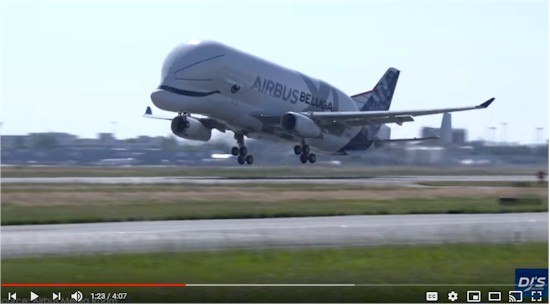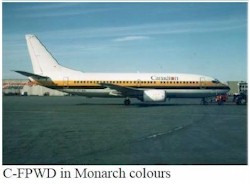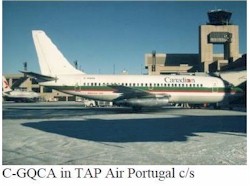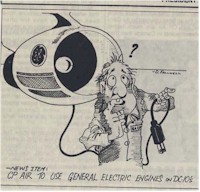|
Our featured YouTube video comes from Dj's Aviation channel on the introduction of the Airbus Beluga XL. A link to a story published at AVweb.com follows below. |
 |
|
The first of six A330-based BelugaXL mega freighters entered service January 15, 2020, enabling Airbus to carry ever larger aircraft parts for production and make children giggle the world over. The Beluga XL development began in November 2014 and first flew in the summer of 2018. It received its EASA type certificate in November 2019. Airbus says the BelugaXL has “the largest cargo bay cross-section of all existing cargo aircraft worldwide. The BelugaXL can carry two A350 XWB wings compared to the BelugaST, which can only carry one.” Since the original BelugaST was based on the earlier A300, it’s no surprise that the XL is usefully larger. The 30 percent additional capacity comes from a fuselage 3 feet wider and 21 feet longer. (Source: AVweb.com, January 15, 2020 |
|
The following items are reprinted from the archives of FlightGlobal.com Registration is free to view a large library of information. |
|
|
History in 1948 - Canadian Pacific Air Lines started operating the first direct service from Vancouver to Alaska and the Yukon on August 1948. The six-hour direct service operates twice weekly from Vancouver to Whitehorse, Y.T., and Fairbanks, Alaska, using 24-seater DC-3 aircraft, and provides direct connections with air routes to the south and to Dawson City in the north. Other C.P.A.L services to the Yukon and Alaska are also continuing to operate. From September 1, 1948 aircraft providing sleeper accommodation and with a capacity or 18 passengers will be used. (Source: flightglobal.com/pdfarchive/view/1948/1948 - 1256.html)) |
|
|
History in 1951 - C.P.A.’s plans for the Comet The Comets now being built for Canadian Pacific Air Lines are likely to be seen first on the South Pacific sections of the company's network, rather than on the northern arc to Tokyo and Hong Kong, as was previously contemplated. Delivery is expected late next year, by which time C.P.A. will stand to benefit considerably from the experience which B.O.A.C. should have accumulated on the type. The Vancouver-Australia over-ocean service has particular need of Comet speed, because the stages are at present long and boring; and it suits jet-aircraft characteristics in that there are no calls for the substantial fuel reserves associated with bad-weather diversion and stacking. The weather is normally reliable in this part of the world and, although the temperatures are tropical at some of the stopping points, the runways are of adequate length for take-off. The existing stage-lengths are especially suitable for the Comet Series 1 Ghost engines), except for the Honolulu-Vancouver stage of 2,800 statute miles. This would call for the range of the Series 2, powered by Rolls-Royce Avons. The intention, therefore, is to introduce the Series 1 Comets on the sections south of Honolulu, in conjunction with Douglas DC-6Bs (Pratt and Whitney R-2800 engines) on the Honolulu-Vancouver leg. The Series 1 aircraft will be based in Sydney. They will work two return trips weekly, one from Sydney via Fiji and Canton to Honolulu (5,200 statute miles), and another from Sydney via Auckland, Fiji and Canton to Honolulu (5,600 miles). Australia will thus enjoy two, and New Zealand one, weekly fast services to Hawaii, with all the refinements of smooth, vibration-free travel which are the main attractions of the jet airliner. From Honolulu to the Canadian coast passengers must, for the time being, make the long stage at a more ordinary speed and height. The actual stage-lengths for the Comet sections in statute miles are approximately as follows: Sydney-Fiji, 2,000; Fiji-Canton, 2,27O; Canton-Honolulu, 1,900; Sydney-Auckland, 1,350; Auckland-Fiji, 1,320. An agreeable facility for the C.P.A. trans-Pacific traveller will be the 30-hour stop-over at Honolulu which is permitted by the ticket. Certainly the prospect of spending a short time at Waikiki rather than of drumming through the weather layers over the vast ocean without a break seems likely to attract many passengers. (Source: flightglobal.com 1951 - 2212) Note - CPA never put the Comet into service. The first one crashed on takeoff at Karachi, Pakistan on its delivery flight March 3, 1953, killing the 11 persons on board (the first loss of a commercial jet), and the second aircraft, which had been built, was cancelled. Following two disastrous BOAC Comet crashes in early 1954 due to metal fatigue (and two earlier BOAC Comet losses for other reasons), the Comet 1 was grounded. A redesigned and larger Comet 4 went into airline service in late 1958 but was too small to offer serious competition to the Boeing 707 and Douglas DC-8. |
|
|
A couple of leased aircraft during transition. C-FPWD in Monarch colours and C-GQCA in TAP Portugal colours. Footnote: Both of these registrations were later assigned to Airbus A320's delivered to Canadian Airlines International and both are still active as part of the Air Canada Jetz fleet. |
|
 |
 |
 |
|
|
Issue dated April 1987. Growing visibility — Canadian Airlines International. Along with other aspects of the new corporate identity program, on April 26,1987 flight crews will begin identifying themselves as "Canadian (flight number)" in air to ground communications. The close alliance of Canadian Airline's commuter and commercial partners will be reflected in the new livery of their fleets. Time Air, Norcanair, Calm Air and the yet to be named Ontario commuter will be repainted with a blue belly separated from a sky white top by a thin red stripe. Canadian Airlines International logo will be prominent on the aircraft tail. Each individual airline's name will appear in large blue italic letters on the section of the aircraft. A Time Air Dash 8 will be the first of the commuter aircraft to lift off with the new livery. It is expected to be airborne Tuesday, April 28, 1987. Calm Air and Norcanair are both planning to have at least one aircraft painted by July 1, 1987. The combined total of approximately 40 aircraft operated by Canadian Airlines' commuter partners is expected to be repainted within the next two years. |
|
|
Airport fanfare to herald Brazil launch. The May 2, 1987 Brazil inaugural flight 476 departed Toronto at 20:30 with a full load following a colourful ceremony, featuring Brazilian music and entertainment. A special commemorative coin had been minted for presentation to all First and Royal Canadian Business Class passengers on the first four flights, both northbound and southbound. (Any reader have one of these coins or a photo of it? - eds) |
|
|
Issue dated June 1987. In conjunction with Time Air, Burrard Air of Vancouver began providing supplementary connection service June 1 for Canadian Airlines between Vancouver's main terminal and Nanaimo, Campbell River and Powell River. Utilizing nine-passenger Piper Chieftain aircraft, Burrard Air flights to these points carry the CP designator and the airline has become a participant in the Canadian Plus travel bonus program. |
|

 We have welcomed 39 new subscribers so far in 2020.
We have welcomed 39 new subscribers so far in 2020.

